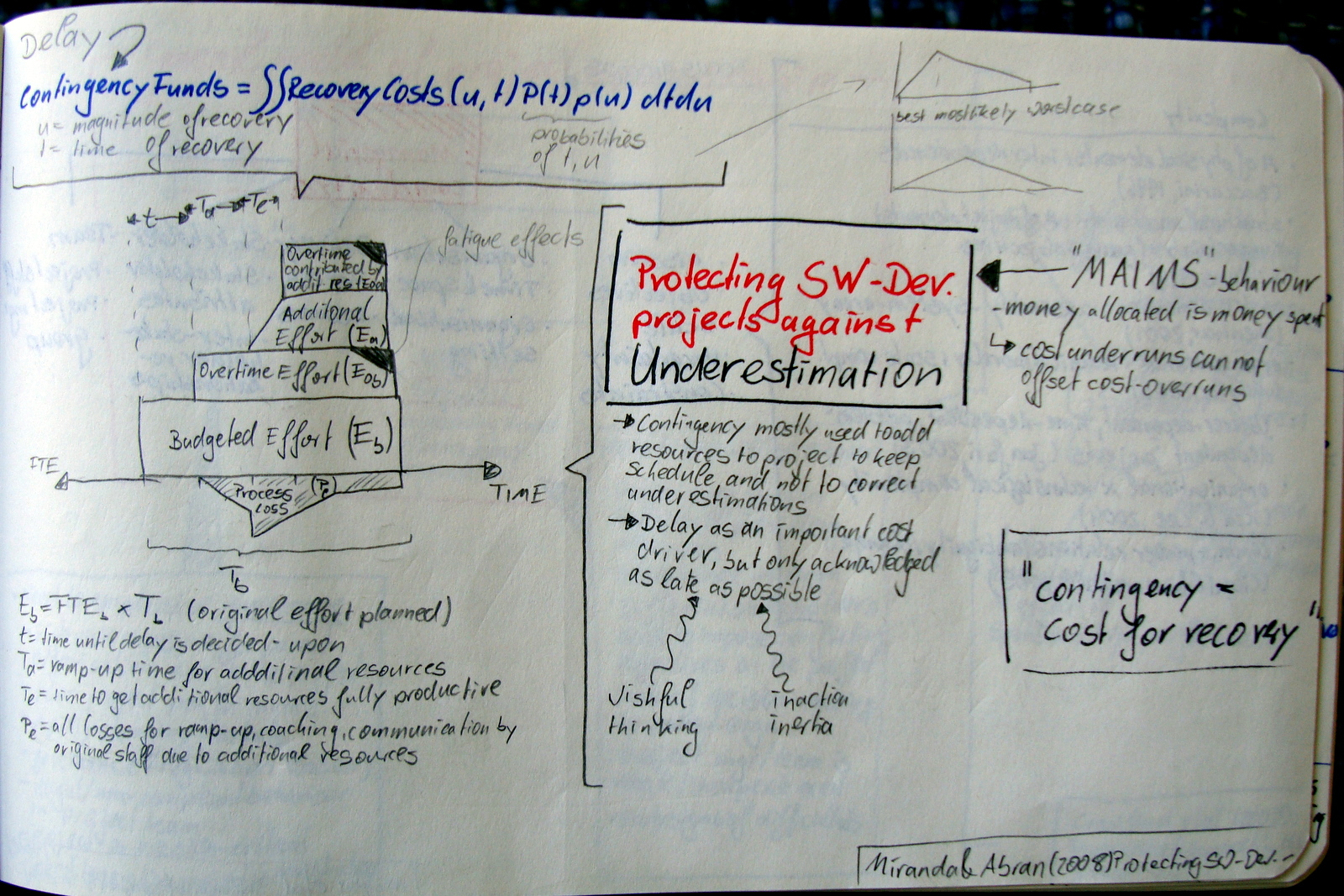
Miranda, Eduardo; Abran, Alain: Protecting Software Development Projects Against Underestimation; in: Project Management Journal, Vol. 39, No. 3, 7585.
DOI: 10.1002/pmj.20067
In this article Miranda & Abran argue „that project contingencies should be based on the amount it will take to recover from the underestimation, and not on the amount that would have been required had the project been adequately planned from the beginning, and that these funds should be administered at the portfolio level.“
Thus they propose delay funds instead of contingencies. The amount of that fund depends on the magnitude of recovery needed (u) and the time of recovery (t). t and u are described using a PERT-like model of triangular probability distribution, based on a best, most-likely, and worst case estimation.
The authors argue that typically in a software development three effects occur that lead to underestimation of contingencies. These three effects are (1) MAIMS behaviour, (2) use of contingencies, (3) delay.
MAIMS stands for ‚money allocated is money spent‘ – which means that cost overruns usually can not be offset by cost under-runs somewhere else in the project. The second effect is that contingency is mostly used to add resources to the project in order to keep the schedule. Thus contingencies are not used to correct underestimations of the project, i.e. most times the plan remains unchanged until all hope is lost. The third effect is that delay is an important cost driver, but delay is only acknowledged as late as somehow possible. This is mostly due to the facts of wishful thinking and inaction inertia on the project management side.
Tom DeMarco proposed a simple square root formula to express that staff added to a late project makes it even later. In this paper Miranda & Abran break this idea down into several categories to better estimate these effects.
In their model the project runs through three phases after delay occurred:
- Time between the actual occurence of the delay and when the delay is decided-upon
- Additional resources are being ramped-up
- Additional resources are fully productive
During this time the whole contingency needed can be broken down into five categories:
- Budgeted effort, which would occur anyway with delay or not = FTE * Recovery time as orginally planned
- Overtime effort, which is the overtime worked of the original staff after the delay is decided-upon
- Additional effort by additional staff, with a ramp-up phase
- Overtime contibuted by the additonal staff
- Process losses du to ramp-up, coaching, communication by orginal staff to the addtional staff
Their model also includes fatigue effects which reduce the overtime worked on the project, with the duration of that overtime-is-needed-period. Finally the authors give a numerical example.